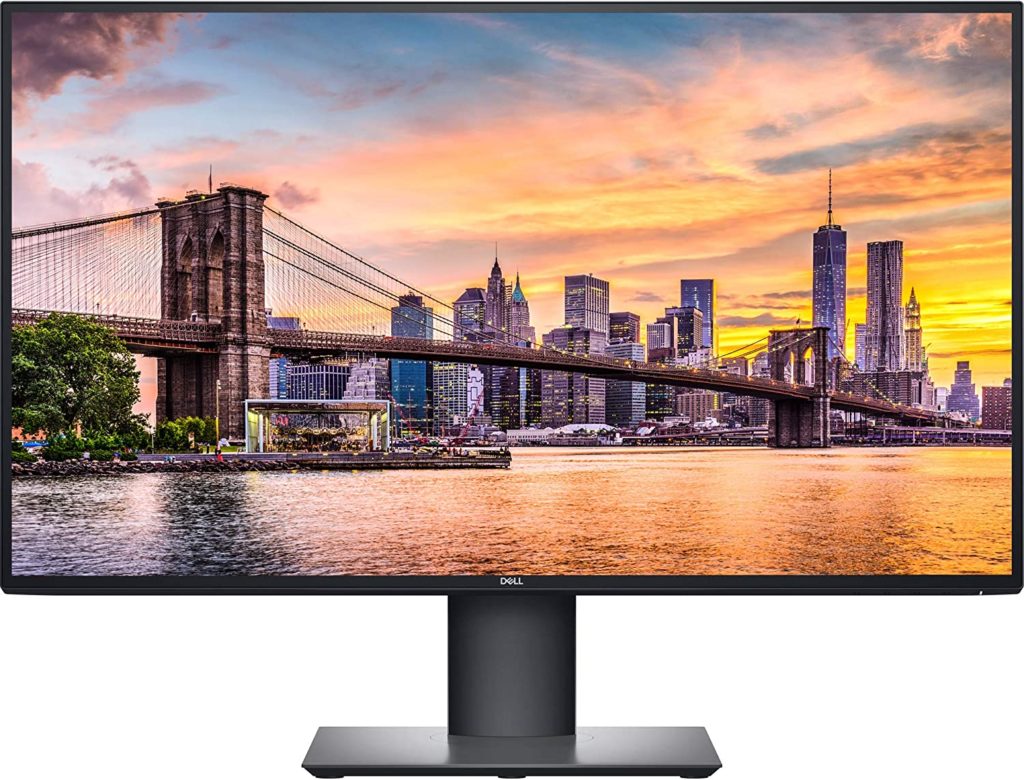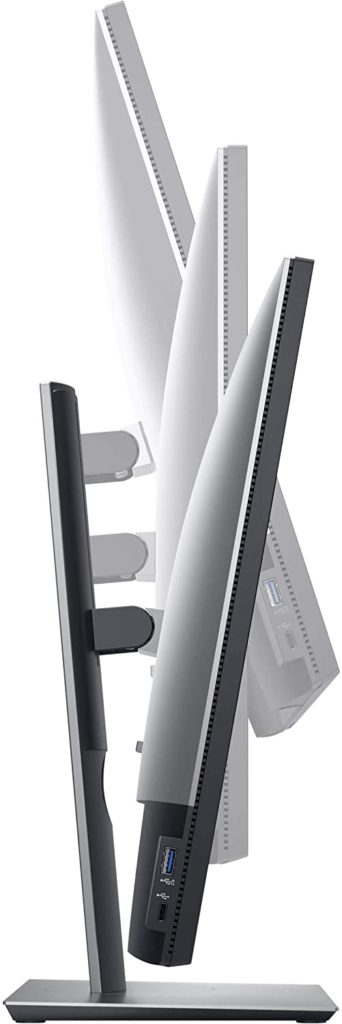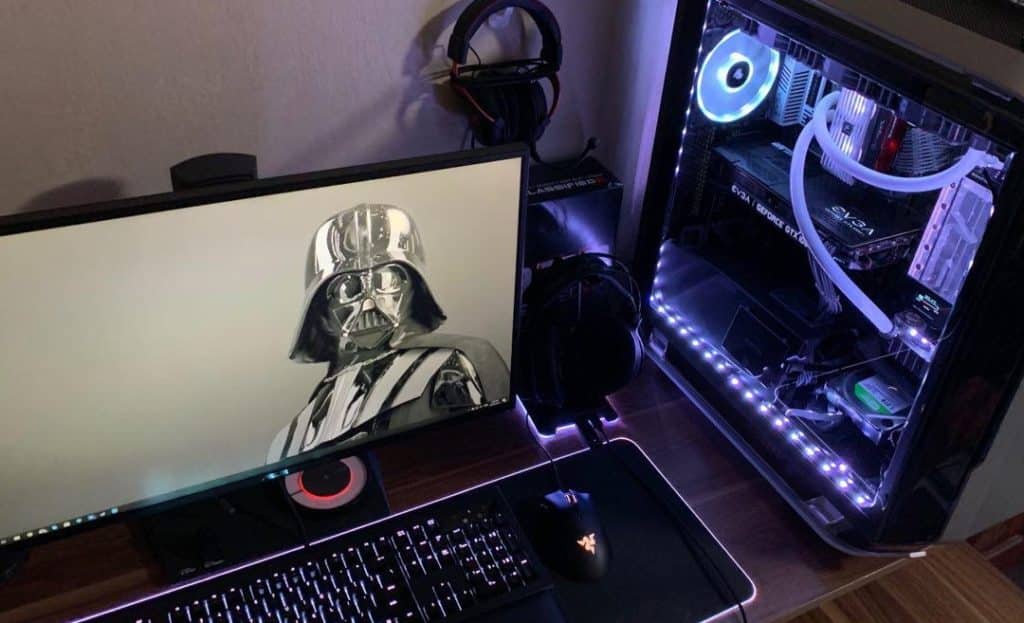Dell U2720Q Review – 4K IPS Monitor with USB-C for Daily Use – Highly Recommended

Check Latest Price on Amazon
The Dell U2720Q is a great all-around display that offers a high-quality IPS panel and sought after features in a modern and reliable package. It’s a fantastic solution for work from home use, but its also a capable entertainment display for games or movies. The Dell U2720Q succeeds some of the brand’s best-selling monitors, so let’s check out if it will live up to meticulous expectations.

Mục lục bài viết
Dell U2720Q Specifications
- Screen Size: 27 Inches
- Resolution: 3840 x 2160 4K UHD
- Aspect Ratio: 16:9
- Panel Technology: In-Plane Switching (IPS)
- Refresh Rate: 60Hz
- Response Time: 5ms
- Contrast Ratio: 1300:1 (Static)
- Brightness: 350 cd/m²
- Speakers: None
- Stand: Height – Yes
- Stand: Tilt – Yes
- Stand: Swivel – Yes
- Stand: Pivot – Yes
- VESA Compatibility: Yes
- Connectivity: DisplayPort 1.4 x 1, HDMI 2.0 x 1, USB-C 90w x 1, USB-C 15w x 1, USB 3.0 x 3, 3.5mm Jack x1
- Dimensions with Stand (WxHxD): 24.07” x 20.68” x 7.28″
- Weight: 14.55 lbs

Design and Features
The Dell U2720Q did not change much when it comes to aesthetics, but the brand did make some improvements to the physical design. The device still has the signature matte black and silver combination which makes the monitor fit into any environment or setup. The display doesn’t have bezels on three sides, but the inner borders that become visible when it is turned on looks thinner than ever.
We also liked that the Dell U2720Q has a reduced footprint thanks to massive reductions in the base’s dimensions. The device only requires 7.28 inches of depth, so it won’t be as intrusive on your desk even if you have a lot of peripherals. The chassis is also slimmer than similar monitors, so flush mounting is possible with this variant.
Build quality for the Dell U2720Q doesn’t disappoint as well since the monitor is well made with premium materials. The fit and finish are perfect so you won’t see any gaps, cosmetic defects, or uncut seams. The monitor also stands stable, so it won’t shake or dance around even if you pound on your keyboard.
The Dell U2720Q is a premium model, but what’s most disappointing is it still uses buttons for OSD control. Dell’s Display Manager app will help with some presets and features, but calibrating the display’s settings will still go through the former. We prefer joysticks for monitors like this which have various settings that its intended audience will use to the full extent.
The included stand on the Dell U2720Q is fully flexible, so you can tilt, swivel, pivot, and raise the screen according to your needs. The mechanism feels smooth yet firm enough to hold your desired position almost permanently. This model is VESA compatible, but we only think it’s necessary for multi-display setups or if you absolutely need to save space.

Connectivity, on the other hand, is the best physical characteristic of the Dell U2720Q which includes everything you will need for daily use. You will find a DisplayPort 1.4 and HDMI 2.0 slot as primaries, but what stands out is the USB-C connector that supports DP Alt Mode while providing 90 watts of juice for your USB-C device. The monitor also has a total of three USB 3.0 slots for convenience or peripherals.
The hub on the Dell U2720Q’s side includes a second USB-C connector, but it can only provide 15 watts of power. The third USB 3.0 port is also located here for easy access since it has fast-charging properties.
One thing that’s missing from the Dell U2720Q is a pair of built-in speakers which would come in handy for some if its audience. Robust monitors like this model are great for businesses and studios, but its also a viable solution for work from home use. The speakers would come in handy for conference calls or background music, but it probably won’t be good enough for games and movies if it was included.
Display and Performance
The Dell U2720Q sports a 27-inch IPS panel with a 3840 x 2160 resolution, 60Hz refresh rate, and 5ms response time. The backlight goes up to 350 cd/m2 and an extended contrast ratio of 1300:1 like LG’s Nano IPS panels. The screen and WLED unit combine to create extensive gamut coverage, but the brightness and lack of local dimming will limit the HDR effect of the monitor.
4K in a 27-inch screen looks extra sharp and well detailed which makes it great for viewing images, movies, or playing games. However, some users may struggle with the dense pixels which can make small objects like text difficult to see. Using scaling isn’t ideal, but it is your easiest solution for this predicament in case it affects you.
The Dell U2720Q covers 100% of the sRGB gamut or around 83% Adobe RGB coverage and a whopping 95.3% DCI-P3 coverage. Accuracy sits at deltaE 1.85 which is fantastic for a default setting, so most users won’t need to use a colorimeter with this model. Color temperature is also quite balanced which gives us a screen that doesn’t have yellowish or bluish tints.
You can calibrate the monitor to get a color dE of only 0.9 which is fantastic for a mixed-use monitor. The problem is you need to buy the colorimeter which adds to the already high price of this model when compared to similar offerings. You can settle with adjusting the settings which will give you a slightly better color output than the default, but it’s only necessary if you need this display for editing.
The Dell U2720Q can reach a contrast ratio of 1230:1 at 50% brightness settings for better black luminance and hues. This monitor is capable of decent black luminance levels and great grayscale performance, but it can still look grayish if the backlight is too high or if viewed in the dark. Only VA panels can exceed this output, but they have a disadvantage when it comes to viewing angles and at times, color consistency.
The Dell U2720Q did not exhibit massive amounts of clouding or backlight bleeding on the edges of the screen. There are minor leaks on the upper corners, but they are only noticeable when viewing an all-black image or if the backlight is set too high. Take note that this aspect varies between every unit, so it’s possible to get a device that performs worse or better in this regard.
Motion handling on the Dell U2720Q isn’t comparable to gaming-grade displays, so there will be some trailing in fast-paced scenes. The 60Hz refresh rate also plays a role here, but most PCs will find it difficult to push beyond that at moderate to high settings. Setting the overdrive to its middle setting will help clear up the trails and artifacts, but be wary of maxing it out which will add overshoot instead.
The Dell U2720Q doesn’t support FreeSync, so naturally, G-Sync Compatible mode is impossible. Adaptive Sync is essential for high-resolution displays, but it is understandable in this instance since the product is meant for productivity and business use more than gaming. Input lag sits at 10ms, so you can enjoy your favorite casual games without worrying about delays.
Thoughts on the Dell U2720Q
The Dell U2720Q delivers when it comes to image quality and functionality with its wide-gamut IPS screen and excellent connectivity. The monitor is ready to use out of the box, but calibrating it provides fantastic results that you don’t usually get in its category. Gaming performance is decent, but the lack of Adaptive-Sync support will make some users look elsewhere.
Finding a flaw on the Dell U2720Q is difficult, but there are a few missing elements that should already be included in the price. The monitor works great as an all-around screen, but it’s disappointing that we didn’t get premium speakers or even an OSD joystick with the device. However, these are minor trepidations, and we’d still happily recommend this option if you want a 4K USB-C monitor with fantastic image quality.
Pros:
- Superb Factory Calibration
- Wide Gamut Coverage
- Excellent Post-Calibration Results
- Attractive Design
- 90-Watt USB-C
Cons:
- Expensive
- No Adaptive-Sync Support
- Limited HDR Performance
Buy Now from Amazon
About the Author:


Paolo is a gaming veteran since the golden days of Doom and Warcraft and has been building gaming systems for family, friends, and colleagues since his junior high years. High-performance monitors are one of his fixations and he believes that it’s every citizen’s right to enjoy one. He has gone through several pieces of hardware in pursuit of every bit of performance gain, much to the dismay of his wallet. He now works with Monitornerds to scrutinize the latest gear to create reviews that accentuate the seldom explained aspects of a PC monitor.











